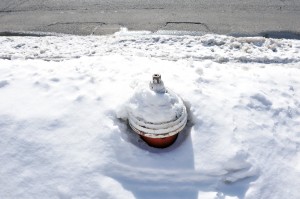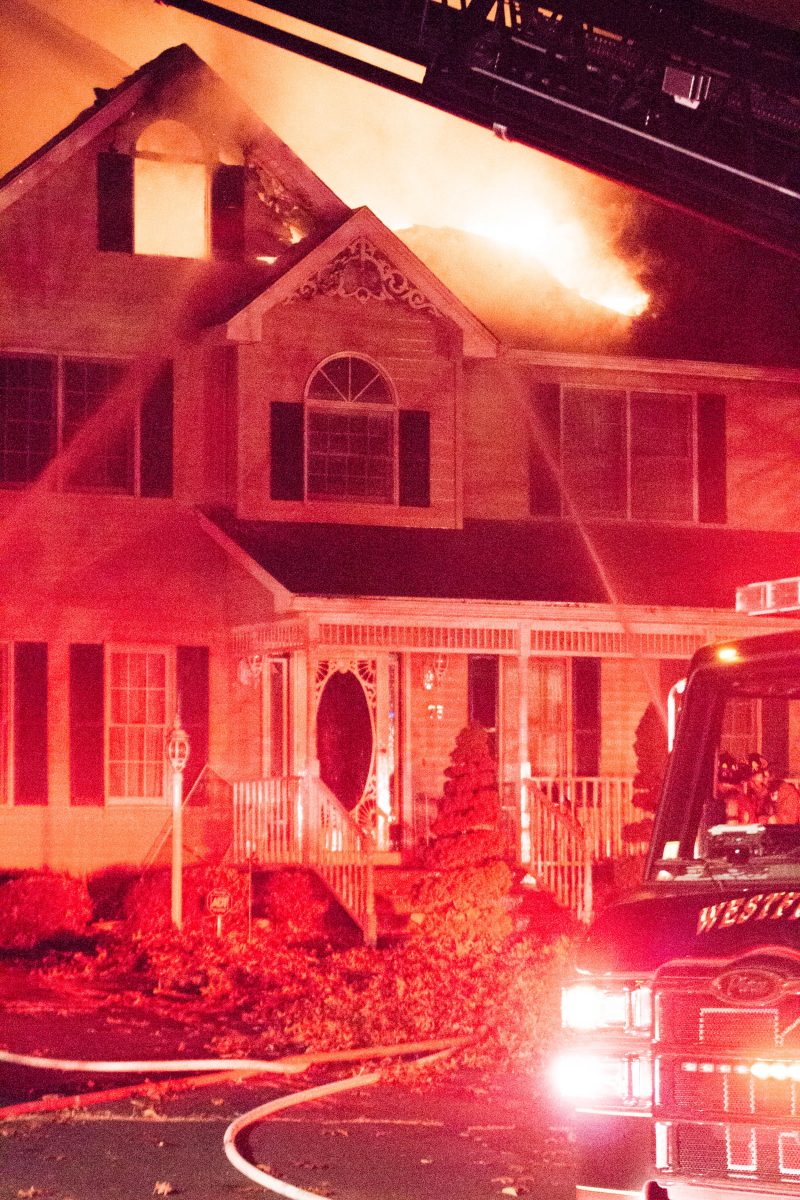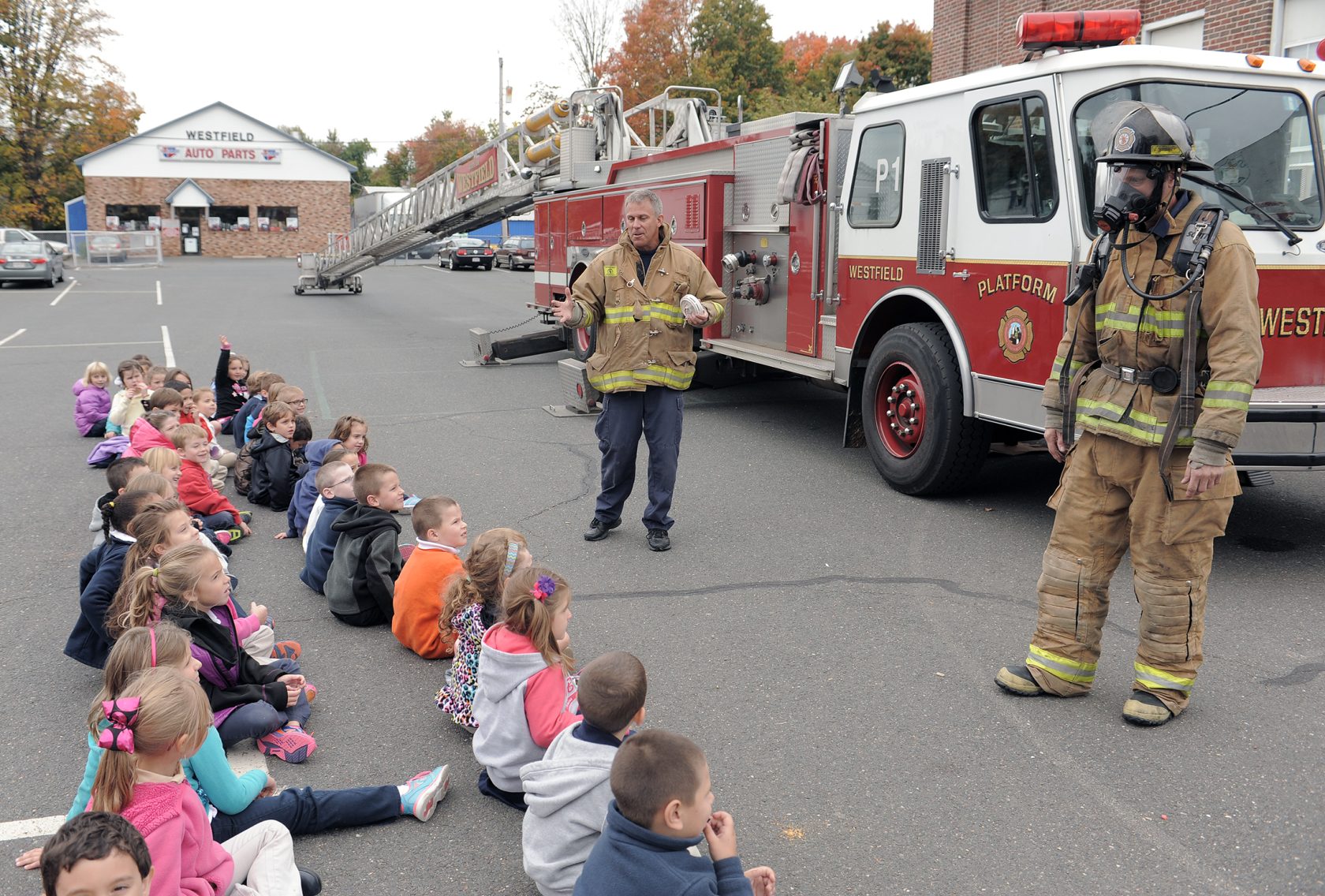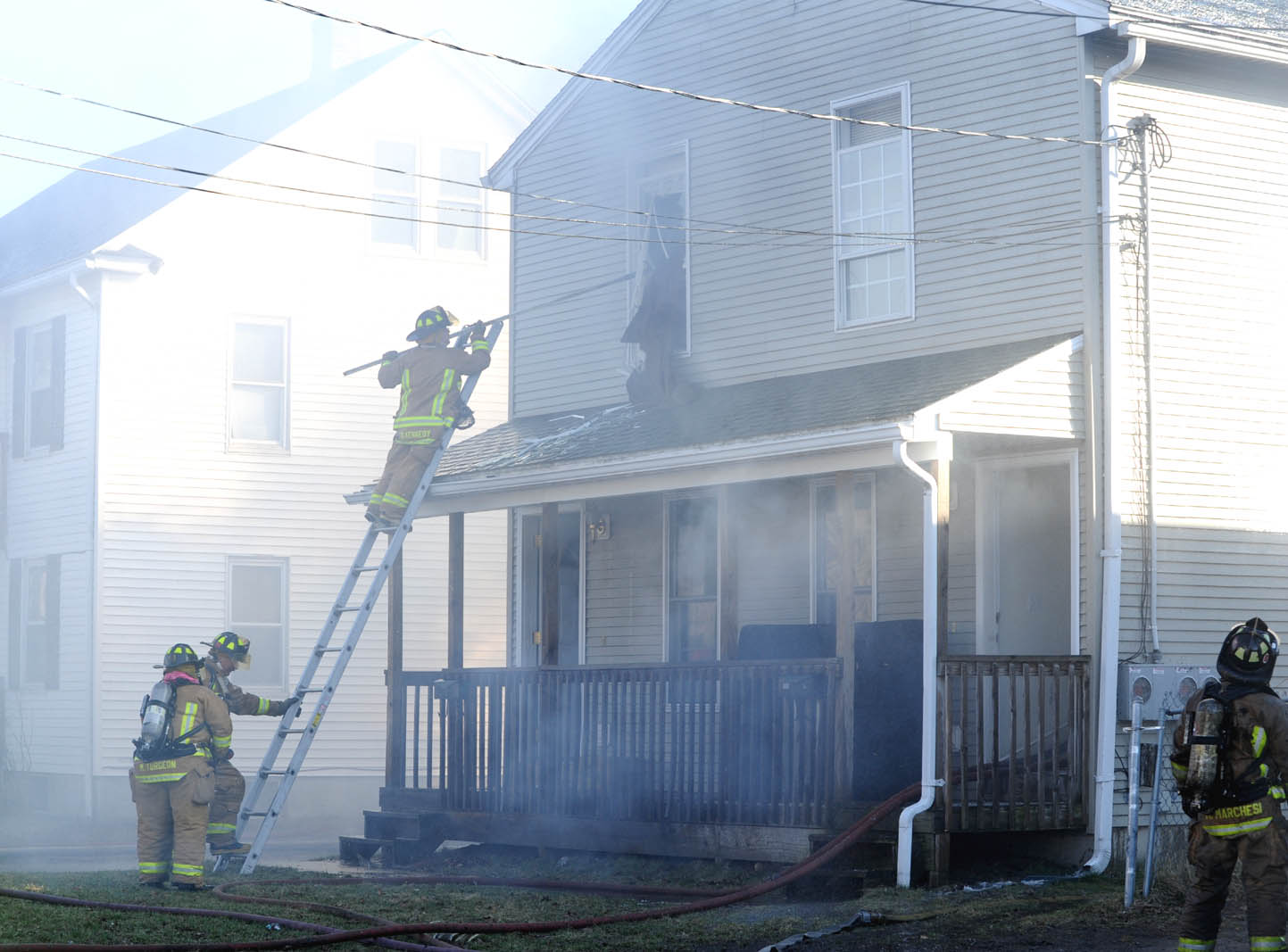WESTFIELD – “It always a good idea” to shovel out fire hydrants because if a house is burning every second it takes to get water flowing onto the fire reduces the risk of “loss of property and possible loss of life” said Deputy Fire Chief Patrick Egloff, the fire prevention officer for city’s fire department.
“The snow’s starting to pile up” he said, and even the hydrants that have a flag attached to mark their locations under the snow, “they’re getting harder to see.”
He said that firefighters can quickly exhaust the 750 gallons of water carried by a pumper truck, and if firefighters cannot tie into a hydrant promptly, any time when water isn’t flowing from the hoses can add to the destruction wrought by a fire.
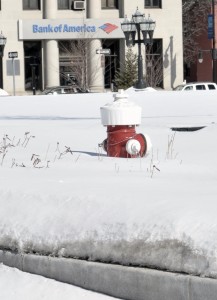
A fire hydrant located in the Park Square Green remains buried in snow Monday. (Photo by Frederick Gore)
He said that the firefighters use a sophisticated geographic information system to locate fire hydrants “but in the real world when they (hydrants) are in(side) snow banks, they’re very hard to find” so a homeowner’s best fire protection tool may be a shovel used to clear access to a hydrant.
Egloff points out that, due to the exigencies of public snow removal efforts, city workers and contractors are exempted from the prohibition against plowing or piling snow on hydrants but residents aren’t.
“A homeowner cannot snowblow snow on to a hydrant”, he said, although a plow operator may legally bury one.
If a resident who has just opened up a driveway which becomes blocked again when a snowplow comes down the street also has a fire hydrant in front of his or her house, not only does the resident have to go back to work to clear snow left by the plow in the driveway, he or she also has to again remove the snow from the hydrant.
“Responsible residents shovel their hydrants”, Egloff said.

